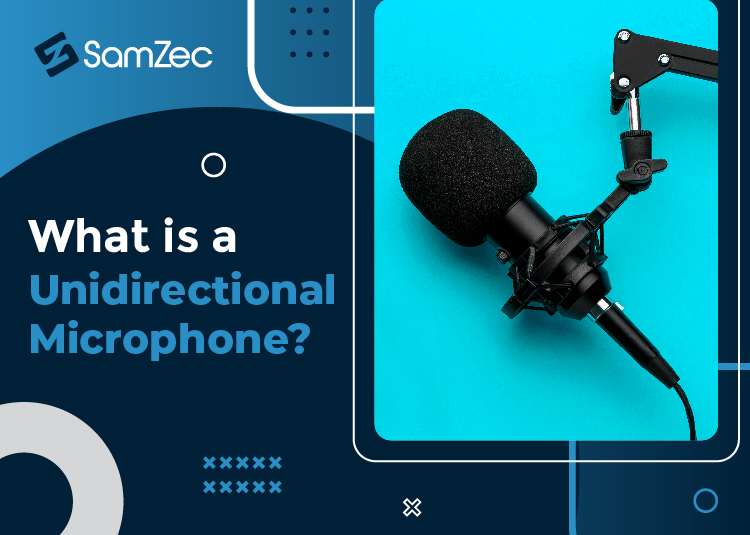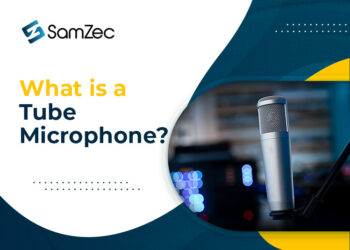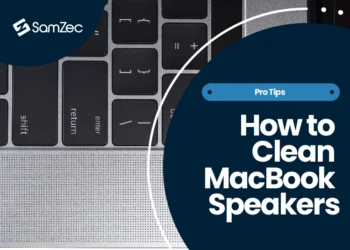A unidirectional microphone is a microphone that picks up sounds only from a particular source. These microphones are also called shotgun mics because of their long and narrow design. A unidirectional microphone is a great choice when you are looking to pick up sound from a distant source and avoid picking up unwanted sound from the surroundings.
This type of mic is usually used for recording instruments, musical performances, or speeches. Depending on the desired application, it can be set to record at either omnidirectional or cardioid pickup patterns.
How does a unidirectional microphone work?
A unidirectional microphone works by using a diaphragm, which is an element used to convert sound waves into an electrical audio signal. The diaphragm converts the sound waves into electrical signals in a different pattern depending on the direction of incoming sound waves.
The sounds that come from one direction are converted into electrical signals out of phase with those produced by those from other directions. The output coming from the diaphragm is then passed onto the circuitry, which is designed to cancel out or reduce the signals that are out of phase.
In other words, the microphone only picks up sound waves coming from a particular direction and rejects those coming from different directions.
How to select a unidirectional microphone?
It depends on the application. If the noise is too high, you should go for a bidirectional microphone. On the other hand, a unidirectional microphone is good if the noise is relatively low (pickup distance less than 15 feet).
They work best for far-end speech in a studio, remote locations, and digital wireless applications. However, if you’re looking for a unidirectional microphone for broadcasting or public address, then a bidirectional microphone is better as it has wider coverage.
How is a unidirectional microphone better than an omnidirectional one?
A unidirectional microphone is better than an omnidirectional one for two main reasons: First, the polar pattern on a unidirectional mic is much narrower, which helps in rejecting noise from the sides and allows for more gain to be applied.
Second, unidirectional microphones are less susceptible to wind noise, which is typically a problem with omnidirectional microphones since the wind is coming from 360 degrees.
Uses of Unidirectional microphone
A unidirectional microphone is mainly used in telephonic devices. A unidirectional microphone rejects sound waves in all other directions; this is most useful in devices that should not pick up sound waves from surrounding areas.
It comprises hemispherical sound ducts and a fairly heavyweight internal diaphragm. The diaphragm picks up sound waves. Sound waves coming into the diaphragm are transferred to the outer part using a rod.
These sound waves are transmitted from the outer part to the enclosed duct using a lightweight diaphragm. Here, the microphone shell plays the role of a reflector, preventing sound waves from entering directly from the surrounding areas.
Since this type of microphone rejects the sound waves from the surrounding areas, they are perfect for telephones, hearing aids, and similar devices. These microphones are also used in recording studios and home stereo systems.
Conclusion
A unidirectional microphone is a microphone that is more sensitive to sounds that come from the front of the microphone than sounds that come from the sides or rear. Some unidirectional microphones are better at rejecting sounds from the sides or rear than others. By rejecting sounds that come from the sides or rear, unidirectional microphones can reject unwanted sounds and noise, improve sound quality, and reduce unwanted noise or feedback.
FAQs
What is a unidirectional condenser microphone?
A unidirectional condenser microphone is a microphone that rejects sound from the backside of the microphone to pick up only sound ahead of the microphone. These are different from the typical microphones in computers, telephones, and dictaphones, which pick up sound in all directions. Unidirectional condenser microphones are generally used to record live musical performances or in noisy environments. They are also used for environmental sound recording.
Is a shotgun mic omnidirectional or unidirectional?
Shotgun mics are usually unidirectional, which means they receive sound waves from one direction. That is why they are used in recording studios to record sound only from a particular direction. A shotgun mic is usually used to record voice or sound directly in front of it. Therefore, it is essential to face the mic correctly to get the best results.
Which type of mic is best for vocals?
Dynamic (or dynamic cardioid) microphones are the industry standard for vocals. They’re generally very affordable and designed to pick up sound from a specific area rather than around the microphone. It makes it easier for someone to come into their sound. Condenser mics are also used for vocals, but they’re a bit more expensive.




















